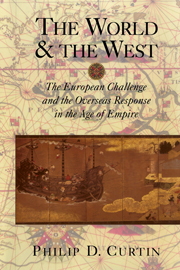Book contents
- Frontmatter
- Contents
- Preface
- Part One Conquest
- Part Two Culture Change and Imperial Rule
- 4 Culture Change in Plural Societies: South Africa and Central Asia
- 5 Culture Change in Mexico
- 6 Administrative Choices and Their Consequences: Examples from Bengal, Central Asia, Java, and Malaya
- Part Three Conversion
- Part Four Independence and the Liquidation of Empires
- Index
5 - Culture Change in Mexico
Published online by Cambridge University Press: 05 June 2012
- Frontmatter
- Contents
- Preface
- Part One Conquest
- Part Two Culture Change and Imperial Rule
- 4 Culture Change in Plural Societies: South Africa and Central Asia
- 5 Culture Change in Mexico
- 6 Administrative Choices and Their Consequences: Examples from Bengal, Central Asia, Java, and Malaya
- Part Three Conversion
- Part Four Independence and the Liquidation of Empires
- Index
Summary
One residual error of the once-popular hemispherization of the world is the view that the history of the Americas in general is much like the history of the United States and different from that of other continents. In fact, Canada and the United States have more in common historically with Australia and New Zealand than they do with most of the tropical Americas. The plantation complex that flourished on the tropical east coast of both continents had intimate connections with Africa as well as with Europe. The plural societies of Indo-America had something in common with other plural societies, such as those of Central Asia or Africa – more, in fact, than they had in common with the settler societies of North America or with the plantation societies of the Caribbean.
The European conquest of Mexico and Peru began in the 1520s, whereas the European conquest of North Africa and of Bantu-speaking South Africa began only in the 1830s. The Russian conquest of Central Asia began even later, in the 1860s. Amerindian and European cultures were therefore in contact within the Spanish empire for about three centuries before the European cultural penetration of Africa and Central Asia had seriously begun.
All cultures change over time, but one simplistic idea about change in Amerindian cultures is that they gradually accepted cultural elements from their European neighbors in a process often called acculturation.
- Type
- Chapter
- Information
- The World and the WestThe European Challenge and the Overseas Response in the Age of Empire, pp. 73 - 91Publisher: Cambridge University PressPrint publication year: 2000



